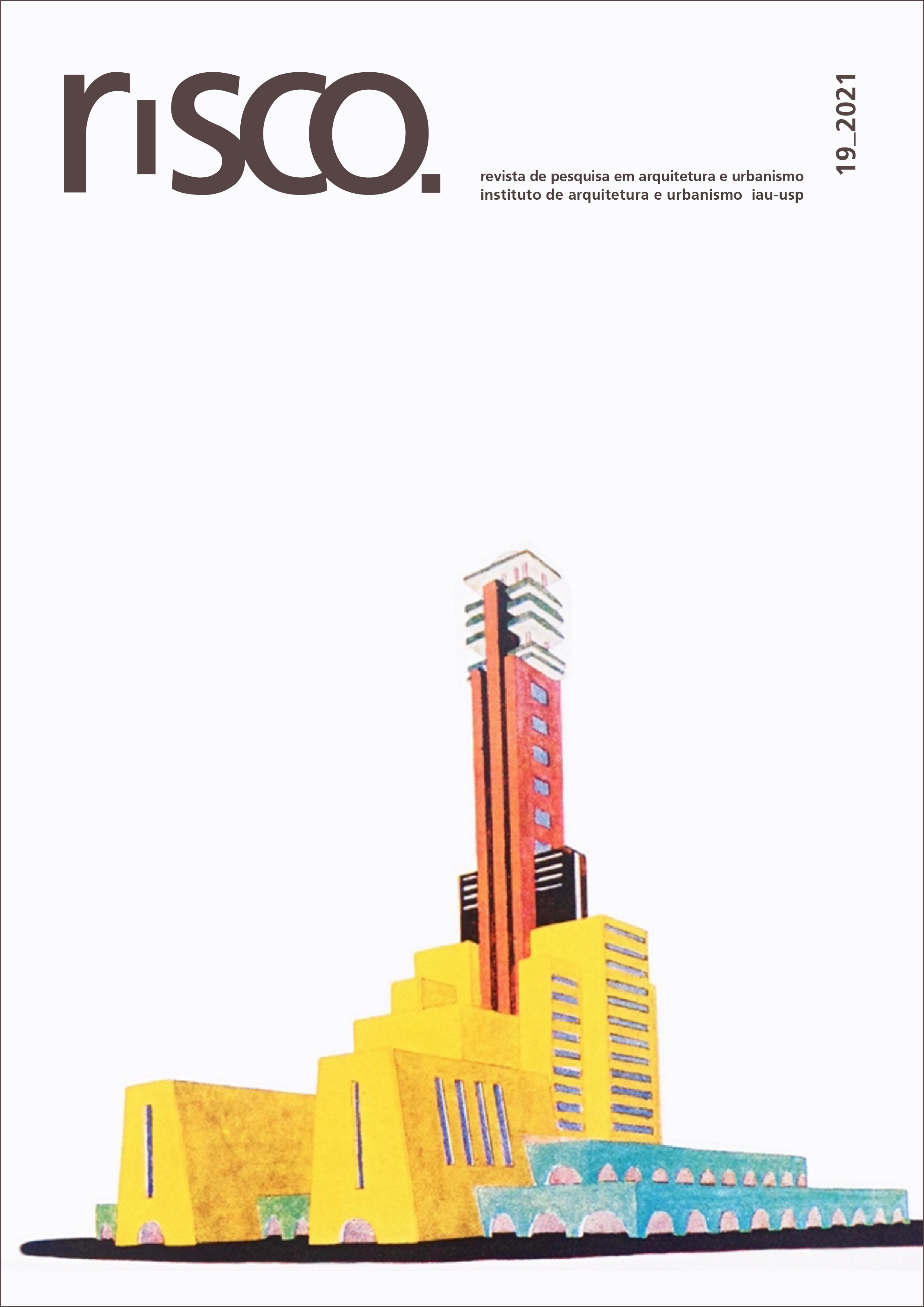Em direção a uma corrente de concreto de baixo CO2: a importância de aumentar o controle de qualidade da produção de concreto
DOI:
https://doi.org/10.11606/1984-4506.risco.2021.183326Palavras-chave:
Cadeia do concreto, Controle de qualidade, Baixo teor de CO2Resumo
O concreto tem cimento em sua composição e, portanto, é um dos principais contribuintes para o aquecimento global. Em sua cadeia, encontram-se diversas oportunidades de mitigação. Este estudo busca apresentar os impactos ambientais trazidos pela falta de controle de qualidade na produção de concretos e as possibilidades de ganhos com as melhorias.Downloads
Referências
ASSOCIAÇÃO BRASILEIRA DE NORMAS TÉCNICAS (ABNT). NBR 12655: Concreto de cimento Portland – Preparo, controle, recebimento e aceitação – Procedimento. Rio de Janeiro, 2015. 29p.
ASSOCIAÇÃO BRASILEIRA DE NORMAS TÉCNICAS (ABNT). NBR 16697: Cimento Portland – Requisitos. Rio de Janeiro, 2018. 16p.
CEMBUREAU. Environmental benefits of using alternative fuels in cement production – a life-cycle approach. 1999. 25p.
DAMINELI, B. L. Conceitos para formulação de concretos com baixo consumo de ligantes: controle reológico, empacotamento e dispersão de partículas. 2013. 237 p. Tese (Doutorado) – Escola Politécnica, Universidade de São Paulo, São Paulo, 2013.
DAMINELI, B. L.; JOHN, V. M. Developing low CO2 concretes: is clinker replacement sufficient? The need of cement use efficiency improvement. Key Engineering Materials, v. 517, p. 342-351, 2012.
DAMINELI, B. L.; KEMEID, F. M.; AGUIAR, P. S.; JOHN, V. M. Measuring the eco-efficiency of cement use. Cement and Concrete Composites, n. 32, p. 555-562, 2010.
FUNDAÇÃO CARLOS ALBERTO VANZOLINI, CERWAY. Referencial de avaliação da qualidade ambiental de edifícios residenciais em construção. São Paulo, 2016.
GCC ASSOCIATION. Getting the Numbers Right, 2018. Data available online. Available: <https://gccassociation.org/gnr/>. Accessed: 15 out. 2020.
HUMPHREYS, K.; MAHASENAN, M. Toward a Sustainable Cement Industry – Substudy 8: Climate Change. 2002. 64p. (Battelle Report Published). Available: <http://wbcsd.org>. Accessed: 13 mar. 2018.
INTERGOVERNMENTAL PANEL ON CLIMATE CHANGE (IPCC). Climate Change 2007: Synthesis Report. 2007. 112p. (Fourth Assessment Report). Available: <https://www.ipcc.ch/site/assets/uploads/2018/02/ar4_syr_full_report.pdf>. Accessed: 15 out. 2020.
INTERGOVERNMENTAL PANEL ON CLIMATE CHANGE (IPCC). Climate Change 2014: Synthesis Report. 2014. 167p. (Fifth Assessment Report). Available: <https://www.ipcc.ch/site/assets/uploads/2018/02/SYR_AR5_FINAL_full.pdf>. Accessed: 15 out. 2020.
JOHN, V. M. On the sustainability of concrete. UNEP Industry and Environment, Paris, v. 26, n. 2-3, p. 62-63, abr-set. 2003. Available: <http://www.uneptie.org/media/review/vol26no2-3/voL26_no2-3.htm>. Accessed: 15 out. 2020.
JOSA, A.; AGUADO, A.; HEINO, A.; BYARS, E.; CARDIM, A. Comparative analysis of available life cycle inventories of cement in the EU. Cement and Concrete Research, Elmsford, n. 34, p. 1313-1320, 2004.
KASTING, J. F.; CATLING, D. Evolution of an habitable planet. Annu. Rev. Astron. Astrophys, New York, n. 41, p. 429-463, 2003.
KJELLSEN, K.O.; GUIMARAES, M.; NILSSON, A (Nordic Innovation Centre). The CO2 balance of concrete in a life cycle perspective. Norway: 2005. (ISBN 87-7756-758-7).
LIPPIATT, B. C. BEES 3.0. Building for Environment and Economic Sustainability – Technical Manual and user guide. NIST National Institute Standards and Technology – U.S. Department of Commerce Technology Administration. NISTIR 6916. U.S., 2002.
UNITED NATIONS ENVIRONMENT PROGRAMME (UNEP). Sustainable Building and Construction: Facts and Figures. Industry and Environment: Sustainable Building and Construction, v. 26, n. 2-3, p. 5-8, April-September 2003. Available: <http://www.unep.fr/media/review/vol26no2-3/005-098.pdf>. Accessed: 15 out. 2020.
UNITED NATIONS ENVIRONMENT PROGRAMME (UNEP); DELTF UNIVERSITY OF TECHNOLOGY. Design for Sustainability: a Practical Approach for Developing Economies. 2009. Available: <http://www.d4s-de.org/manual/d4stotalmanual.pdf >. Accessed: 15 out. 2020.
US GREEN BUILDING COUNCIL. LEED v4.1 – Residential Single Family Homes. Available: < https://www.usgbc.org/leed/v41>. Accessed: 15 out. 2020.
VARES, S.; HÄKKINEN, T. Environmental burdens of concrete and concrete products. Nordic Concrete Research publication 21 1/98, June 1998. Disponível em: <http://citeseerx.ist.psu.edu/viewdoc/download;jsessionid=B9AB28168E776D5D785D039F19822E39?doi=10.1.1.200.4123&rep=rep1&type=pdf>. Acesso em: 15 out 2020.
WASSERMANN, R.; KATZ, A.; BENTUR, A. Minimum cement content requirements: a must or a myth? Materials and Structures, v. 42. n. 7, pp.973-982, 2009.
WORLD WIDE FUND FOR NATURE (WWF). A blueprint for a climate friendly cement industry. 2008. 94p.
Downloads
Publicado
Edição
Seção
Licença
Copyright (c) 2021 Bruno Luís Damineli

Este trabalho está licenciado sob uma licença Creative Commons Attribution-NonCommercial-ShareAlike 4.0 International License.
Autores que publicam nesta revista concordam com os seguintes termos:
a. Autores mantém os direitos autorais e concedem à revista o direito de primeira publicação, com o trabalho simultaneamente licenciado sob a Licença Creative Commons Attribution BY-NC-SA que permite o compartilhamento do trabalho com reconhecimento da autoria e publicação inicial nesta revista.
b. Autores têm autorização para assumir contratos adicionais separadamente, para distribuição não-exclusiva da versão do trabalho publicada nesta revista (ex.: publicar em repositório institucional ou como capítulo de livro), com reconhecimento de autoria e publicação inicial nesta revista.
c. Autores têm permissão e são estimulados a publicar e distribuir seu trabalho online (ex.: em repositórios institucionais ou na sua página pessoal) a qualquer ponto antes ou durante o processo editorial, já que isso pode gerar alterações produtivas, bem como aumentar o impacto e a citação do trabalho publicado (Veja O Efeito do Acesso Livre).

















